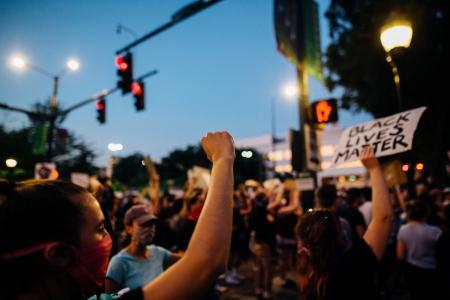On Jan. 6, teachers all over the country watched the events unfolding in our nation’s capital and wondered what to tell the kids at school the next day. On social media, just as during the Black Lives Matter protests in the spring, people argued about whether or not teachers should even be discussing current events in their classrooms. Some said that politics don’t belong in the classroom, that teachers should stick to teaching the curriculum.
In the classroom, when we remain silent is just as important as when and how we choose to speak. The stories we read, the voices we amplify and the policies we uphold all affect our students greatly. When we welcome the outside world into our classrooms, we bear witness to the issues and concerns in the hearts and minds of children. We can educate our students responsibly and ethically by providing developmentally appropriate instruction that is both truthful and hopeful.
To do this, we need to collectively challenge some of our well-worn instructional practices. It is obvious that despite all the demands we currently face, we need to make the time to discuss major events in the world around us. We have an amazing array of virtual museums and anti-racist education resources at our fingertips. Whether we use Passport to Social Studies, WeTeachNYC, Civics for All, Project Soapbox or the Social Studies Scope and Sequence, we can help students develop a better understanding of both the world and their place in it. Let’s do that by using the world around us to teach in a way that invites critical thinking, draws on multiple perspectives and reflects who we are in the 21st century.
Don’t know where to start? Making connections is a key skill that can be taught by layering sources of information. Choose a photograph, a video and a text all about the same topic. Start with a see-think-wonder exercise: Ask students to describe what they see in the photograph and then ask them what they think is happening and what it makes them wonder. Follow with the video to explain background information and lastly, use a text for deeper analysis.
Teaching compare and contrast? Tell stories. For example, talk about Robert Smalls, the formerly enslaved man who commandeered a Confederate ship and sailed himself and 17 passengers to freedom, returned to South Carolina, served five terms in the U.S. House of Representatives and bought the house he was once enslaved in. Pair his story with that of John Lewis, who, after being beaten by police on a freedom march, went on to serve 17 terms in the U.S. House of Representatives. In 2020, his funeral procession retraced the Selma bridge Lewis crossed 55 years ago, as he was mourned as a national hero. Lastly, invite students to research a modern-day freedom fighter who is alive today.
We empower our students by creating opportunities to engage with real-world, relevant topics. In January, it was an insurrection and impeachment; in February, Black History Month; in March, women who changed the world. Now is not the time to wait for mandates. History is constantly unfolding in front of us. Let’s use the news to teach today!
For teaching resources for your own classroom, see the UFT's Teaching about Race and Social Justice page.
